Špičkové Sazenice Révy Vinné: Klíč k Vynikající Úrodě a Charakteristické Chuti Vašeho Vína
Vítejte ve světě vášnivého vinařství, kde každý doušek lahodného vína začíná výběrem té nejkvalitnější sazenice révy vinné. Jsme vaším spolehlivým partnerem na cestě k úspěšné vinici, a proto vám nabízíme širokou škálu prvotřídních sazenic révy vinné, které jsou pečlivě vybírány a ošetřovány tak, aby zajistily zdravý růst, bohatou úrodu a nezaměnitelnou chuť vašeho budoucího vína. Ponořte se s námi do fascinujícího světa odrůd révy, metod pěstování a tajemství dosažení vynikajících vinařských výsledků.
Proč Investovat do Kvalitních Sazenic Révy Vinné? Základ Úspěchu Vaší Vinice
Výběr správných sazenic révy vinné je fundamentálním krokem, který s dalekosáhlým vlivem ovlivní nejen kvantitu, ale především kvalitu vaší budoucí produkce vína. Investice do zdravých a silných sazenic se vám mnohonásobně vrátí v podobě odolnějších rostlin, vyšších výnosů a vína s jedinečným charakterem, který bude odrážet terroir vaší vinice a vaše vinařské umění. Nekvalitní sazenice naopak mohou vést k pomalému růstu, náchylnosti k chorobám a škůdcům, a v konečném důsledku k nižší a méně kvalitní úrodě. Proto je klíčové věnovat výběru sazenic maximální pozornost a důvěřovat prověřeným dodavatelům, kteří garantují původ, zdraví a vitalitu svých rostlin.
Široká Paleta Odrůd Révy Vinné: Najděte Tu Pravou pro Vaši Vinici a Váš Vkus
Svět révy vinné je neuvěřitelně rozmanitý a nabízí nepřeberné množství odrůd, z nichž každá má své specifické vlastnosti, nároky na pěstování a charakteristický chuťový profil výsledného vína. Ať už preferujete svěží bílá vína s ovocnými tóny, elegantní červená vína s komplexní strukturou, nebo aromatická růžová vína, v naší nabídce naleznete širokou paletu odrůd révy vinné, které uspokojí i ty nejnáročnější vinaře. Důkladně vám představíme jednotlivé odrůdy, jejich původ, charakteristické znaky, požadavky na klima a půdu, a doporučíme vám ty nejvhodnější pro vaši lokalitu a vaše vinařské cíle.
Bílé Odrůdy Révy Vinné: Elegance, Svěžest a Aromatická Komplexnost
Bílé odrůdy révy vinné jsou ceněny pro svou svěžest, lehkost a širokou škálu aromatických profilů, od jemných květinových tónů až po bohaté ovocné a minerální nuance. Jsou ideální pro výrobu osvěžujících letních vín, elegantních suchých vín k pokrmům z ryb a drůbeže, i komplexníchArchive Information
Title: Understanding the Role of Sazenice Révy Vinné in Viticulture
Meta Title: Sazenice Révy Vinné: Your Comprehensive Guide to Grapevine Seedlings
Meta Description: Explore the crucial role of sazenice révy vinné (grapevine seedlings) in establishing a successful vineyard. Learn about selection, planting, and care for optimal growth and yield.
Meta Keywords: sazenice révy vinné, grapevine seedlings, viticulture, vineyard establishment, grape varieties, rootstocks, planting grapes, grapevine care, wine production
## The Foundational Importance of Sazenice Révy Vinné in Viticulture
The journey of crafting exceptional wine invariably commences with the selection and cultivation of healthy and robust sazenice révy vinné – grapevine seedlings. These young plants represent the very genesis of a vineyard, holding within them the potential for years, even decades, of fruit production. Understanding the intricacies surrounding sazenice révy vinné is paramount for both novice and experienced viticulturists, as the initial choices made regarding these seedlings will profoundly influence the future success and characteristics of the vineyard and the resulting wine.
The selection of appropriate sazenice révy vinné transcends merely choosing a desired grape variety. It encompasses a multifaceted decision-making process that takes into account factors such as the specific terroir of the vineyard site, including soil composition, climate, and topography; the desired characteristics of the final wine product; the resistance of the rootstock to local pests and diseases; and the overall vigor and compatibility of the scion (the fruiting variety) with the chosen rootstock. A well-informed decision at this stage lays the groundwork for a thriving vineyard capable of producing high-quality grapes year after year.
### The Crucial Role of Rootstocks in Sazenice Révy Vinné
A fundamental aspect of understanding sazenice révy vinné lies in recognizing the significance of rootstocks. In modern viticulture, the majority of grapevines are grafted onto rootstocks, which are typically varieties of Vitis species other than Vitis vinifera, the species that encompasses most of the world’s wine grapes. This practice arose primarily as a defense against the devastating phylloxera epidemic of the late 19th century, an aphid-like insect that attacks the roots of Vitis vinifera.
Rootstocks confer numerous benefits beyond phylloxera resistance, including:
* Adaptation to Soil Conditions: Different rootstocks exhibit varying degrees of tolerance to different soil types, including those with high or low pH, poor drainage, or salinity. Selecting the appropriate rootstock ensures the grapevine can effectively absorb nutrients and water from the specific soil environment of the vineyard.
* Vigor Control: Rootstocks can influence the vigor of the scion, affecting the rate of growth, the size of the canopy, and ultimately the yield of grapes. This allows viticulturists to match the vigor of the vine to the desired production level and the specific characteristics of the site.
* Drought Tolerance: Certain rootstocks are better adapted to dry conditions and can enhance the grapevine’s ability to withstand water stress. This is particularly important in regions with limited rainfall or during periods of drought.
* Resistance to Other Pests and Diseases: Besides phylloxera, some rootstocks offer resistance to other soil-borne pests and diseases, such as nematodes. This can reduce the need for chemical treatments and promote the long-term health of the vineyard.
* Nutrient Uptake: Rootstocks can influence the uptake of specific nutrients from the soil, potentially affecting the composition and flavor profile of the grapes and the resulting wine.
The selection of the appropriate rootstock is a critical decision that must be made in conjunction with the choice of the scion variety. Compatibility between the scion and the rootstock is essential for successful grafting and long-term vine health and productivity.
### The Diversity of Scion Varieties in Sazenice Révy Vinné
The scion, or the upper part of the grafted grapevine, is the variety that determines the type and characteristics of the grapes produced. The world of wine grapes is incredibly diverse, with thousands of varieties, each possessing unique attributes in terms of flavor, aroma, acidity, sugar levels, and suitability to different climates and winemaking styles.
When selecting scion varieties for sazenice révy vinné, viticulturists consider a multitude of factors:
* Climate Suitability: Different grape varieties thrive in different climates. Some prefer warm, sunny conditions, while others are better suited to cooler, more temperate regions. Matching the variety to the local climate is crucial for optimal ripening and fruit quality.
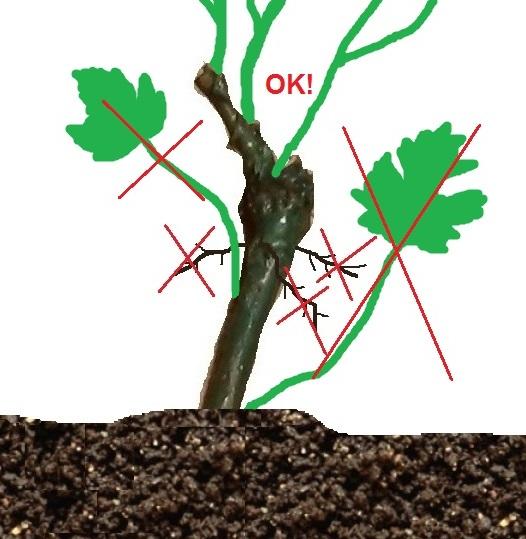
* Soil Preference: While rootstocks primarily address soil-related challenges, some scion varieties also exhibit preferences for certain soil types. Understanding these preferences can contribute to better vine health and grape quality.
* Desired Wine Style: The choice of scion variety is the most direct determinant of the type and style of wine that will be produced. Whether the goal is to produce crisp white wines, elegant red wines, or aromatic rosé wines, the selection of the appropriate grape variety is paramount.
* Market Demand: Viticulturists also consider market trends and consumer preferences when choosing which grape varieties to plant. Selecting varieties that are in demand can enhance the economic viability of the vineyard.
* Disease Resistance: While rootstocks offer protection against soil-borne diseases, some scion varieties exhibit greater natural resistance to certain fungal diseases that affect the aerial parts of the vine, such as powdery mildew and downy mildew.
The careful consideration of these factors ensures that the chosen sazenice révy vinné with the desired scion variety will flourish in the specific vineyard environment and produce grapes suitable for the intended winemaking goals.
### The Grafting Process: Uniting Scion and Rootstock in Sazenice Révy Vinné
The creation of a grafted sazenice révy vinné involves joining a piece of the desired scion variety to a selected rootstock. This intricate process requires skill and precision to ensure a successful union and the development of a healthy, vigorous plant.
The grafting process typically involves the following steps:
1. Selection of Grafting Material: Healthy and disease-free canes (mature shoots) are selected from both the scion and the rootstock varieties.
2. Preparation of Grafting Cuts: Precise cuts are made on both the scion and the rootstock to create matching surfaces that will facilitate the union. Common grafting methods include omega grafts, whip grafts, and cleft grafts.
3. Joining the Scion and Rootstock: The prepared scion and rootstock pieces are carefully joined together, ensuring maximum contact between the cambium layers (the actively growing tissue responsible for cell division).
4. Securing the Graft Union: The graft union is typically secured with grafting tape or wax to hold the pieces together and prevent desiccation.
5. Callusing and Rooting: The grafted plants are then placed in a controlled environment that promotes callusing (the formation of new tissue at the graft union) and the development of roots from the rootstock.
6. Acclimatization and Nursery Growth: Once the graft has healed and roots have developed, the young sazenice révy vinné are gradually acclimatized to outdoor conditions and grown in a nursery until they are ready for planting in the vineyard.
The quality of the grafting process significantly impacts the success rate and the long-term health and productivity of the grafted vines. Skilled nurseries employ rigorous quality control measures to ensure that only well-grafted and healthy sazenice révy vinné are made available to viticulturists.
### Selecting High-Quality Sazenice Révy Vinné: Key Considerations
Choosing high-quality sazenice révy vinné is essential for establishing a healthy and productive vineyard. When selecting seedlings, viticulturists should consider the following:
* Reputable Nursery: Source sazenice révy vinné from reputable nurseries with a proven track record of producing healthy and true-to-type plants. These nurseries often adhere to strict quality control standards and can provide valuable information about the origin and characteristics of their seedlings.
* Certification: In many regions, certified sazenice révy vinné are available. Certification ensures that the seedlings are free from specific diseases and pests and that the scion variety is true to its name.
* Visual Inspection: Carefully inspect the seedlings for signs of disease, pests, or physical damage. The graft union should be well-healed, and the root system should be well-developed and healthy.
* Variety and Rootstock Information: Ensure that the nursery provides clear and accurate information about the specific scion variety and rootstock of each seedling. This information is crucial for making informed decisions about vineyard design and management.
* Age and Size: Select seedlings of an appropriate age and size for planting. Typically, one- or two-year-old grafted vines are preferred.
* Handling and Transportation: Proper handling and transportation of sazenice révy vinné are essential to prevent damage and stress. Ensure that the seedlings are kept moist and protected from extreme temperatures during transit.
Investing time and effort in selecting high-quality sazenice révy vinné from reliable sources will pay dividends in the long run by contributing to a healthier, more productive, and ultimately more profitable vineyard.
### The Planting Process: Giving Sazenice Révy Vinné a Strong Start
The planting of sazenice révy vinné is a critical stage in vineyard establishment. Proper planting techniques ensure that the young vines have the best possible start and can develop a strong root system.
Key aspects of the planting process include:
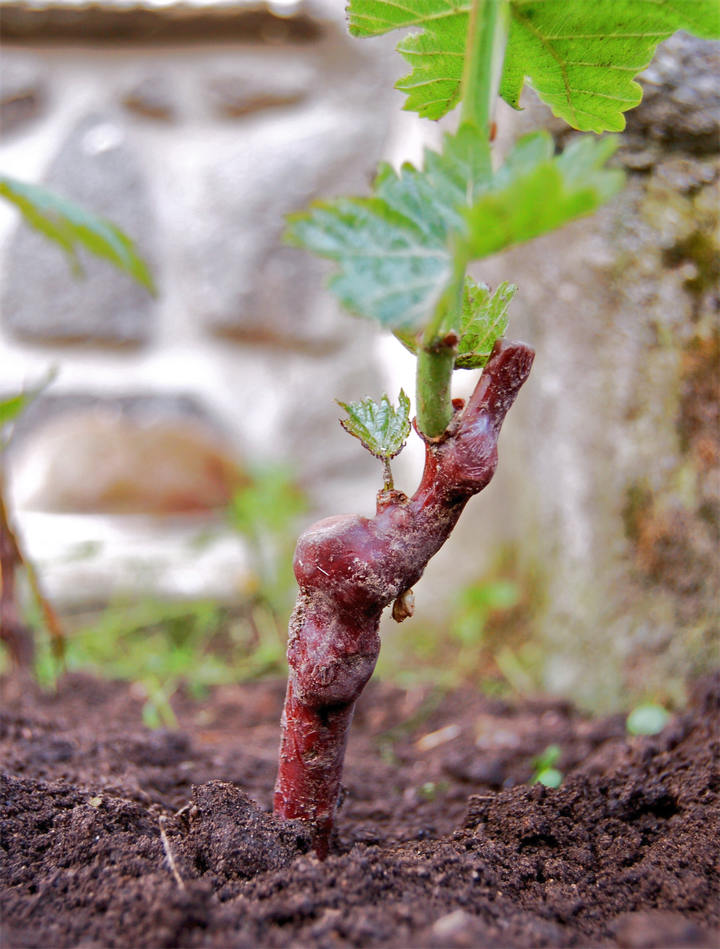
1. Site Preparation: The vineyard site should be thoroughly prepared before planting, including soil analysis, amendment if necessary, and the establishment of proper drainage.
2. Layout and Spacing: The spacing between vines and rows should be carefully planned based on the chosen grape variety, rootstock, trellis system, and available equipment.
3. Planting Time: The optimal planting time varies depending on the climate and the type of sazenice révy vinné (dormant bare-root or potted). Generally, dormant vines are planted in late winter or early spring.
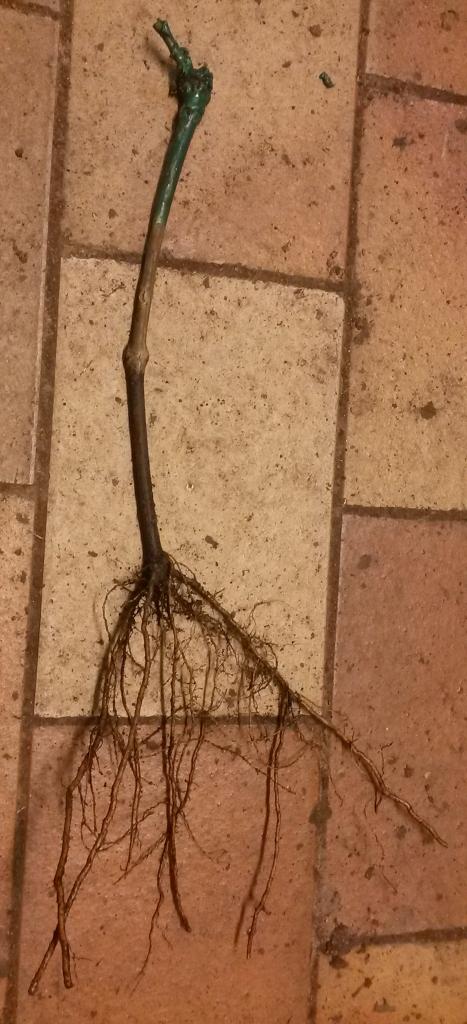
4. Planting Technique: Dig holes that are large enough to accommodate the root system without bending or crowding the roots. Position the vine so that the graft union is a few inches above the soil line to prevent the scion from rooting. Backfill the hole with soil, gently firming it around the roots.
5. Watering: Water the newly planted sazenice révy vinné thoroughly to settle the soil and provide moisture for root establishment.
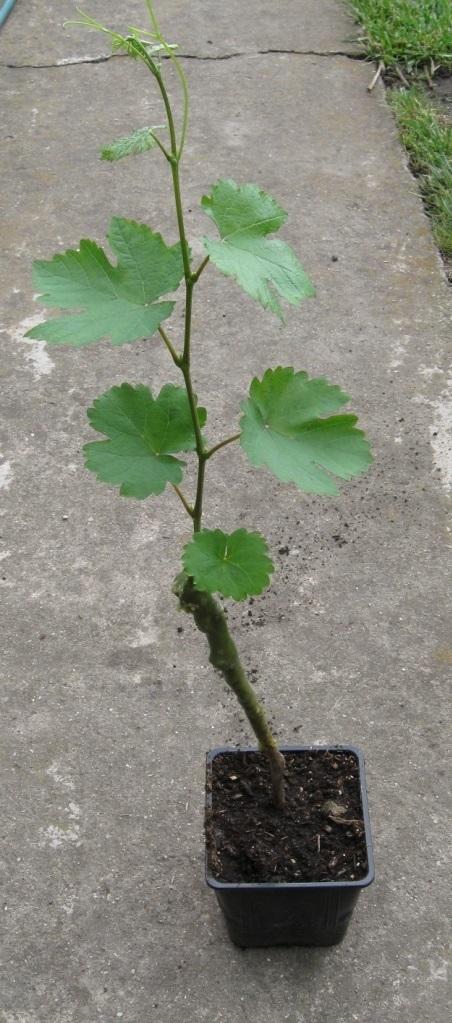
6. Protection: Protect young vines from animal damage and extreme weather conditions, such as frost or strong winds.
Proper planting practices provide the sazenice révy vinné with a solid foundation for healthy growth and development, contributing to the long-term success of the vineyard.
### Post-Planting Care of Sazenice Révy Vinné: Nurturing Young Vines
The initial years after planting are crucial for the establishment and development of sazenice révy vinné. Consistent and appropriate care during this period will ensure that the young vines grow vigorously and develop into productive grapevines.
Essential post-planting care practices include:
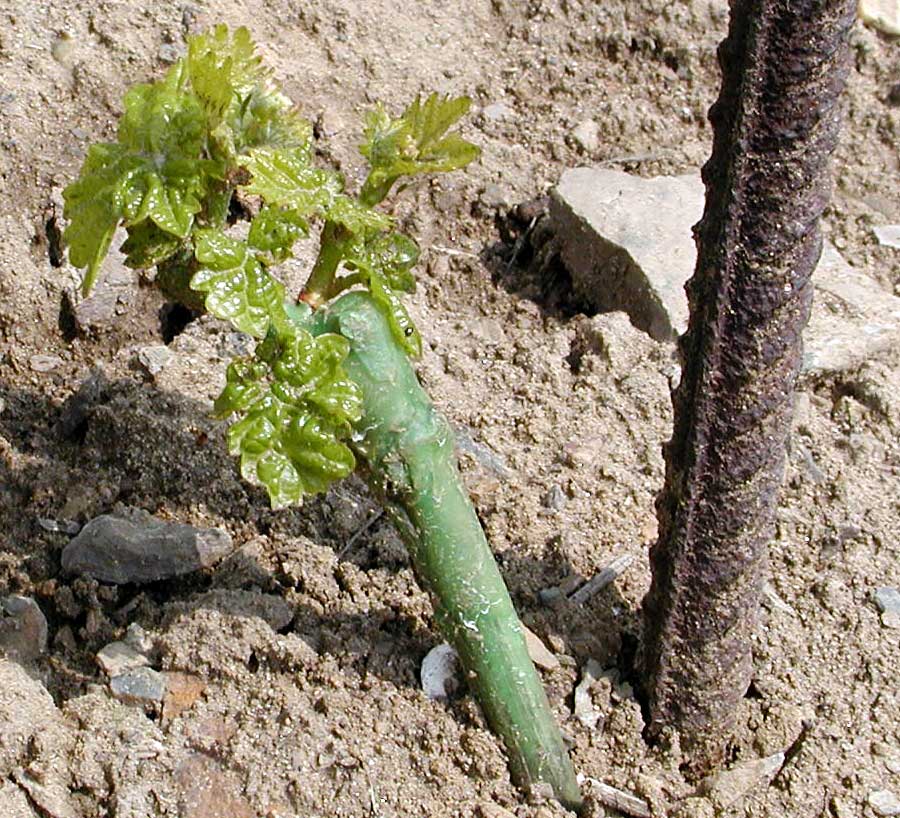
* Watering: Regular watering is essential, especially during dry periods, to support root development.
* Weed Control: Control weeds around the young vines to reduce competition for water and nutrients.
* Training: Begin training the young vines to the chosen trellis system. This involves selecting and guiding the growth of the main shoots.
* Pruning: Implement early pruning practices to shape